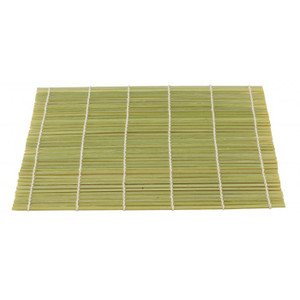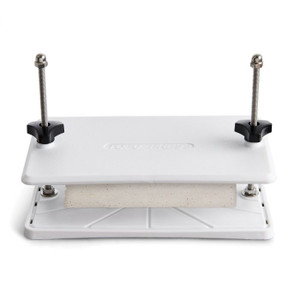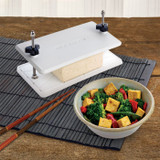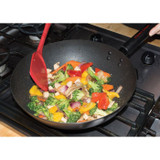
Helen's Asian Kitchen Brown Suribachi is perfect for crushing sesame seeds, garlic, herbs and other nuts and seasonings, with its sharp ribbed interior holds ingredients in place for more efficient grinding.
Durable earthenware mortar with rich brown exterior glaze.
5-1/2 inch wide, 2-1/4 inch high.
4-3/4 inch long wooden pestle.
Model 97034
To use: Simply place the suribachi over a damp towel or rubber mat on your work counter. Hold the pestle with one hand and rotate the pestle against the ridges.
Introduced from Southern China in the 11th century, the Japanese mortar (suribachi) and wooden pestle (surikogi) is an important tool in the Japanese kitchen. The literal translation of suribachi is 'grinding bowl'. And that is what it does to perfection. The unglazed ridged interior facilitates grinding and prevents ingredients from slipping and sliding. The traditional wooden pestle is designed to prevent unnecessary wearing down of the ridges.
How to Use a Mortar and Pestle
Durable earthenware mortar with rich brown exterior glaze.
5-1/2 inch wide, 2-1/4 inch high.
4-3/4 inch long wooden pestle.
Model 97034
To use: Simply place the suribachi over a damp towel or rubber mat on your work counter. Hold the pestle with one hand and rotate the pestle against the ridges.
Introduced from Southern China in the 11th century, the Japanese mortar (suribachi) and wooden pestle (surikogi) is an important tool in the Japanese kitchen. The literal translation of suribachi is 'grinding bowl'. And that is what it does to perfection. The unglazed ridged interior facilitates grinding and prevents ingredients from slipping and sliding. The traditional wooden pestle is designed to prevent unnecessary wearing down of the ridges.
How to Use a Mortar and Pestle
- Primary Material:
- Wood







